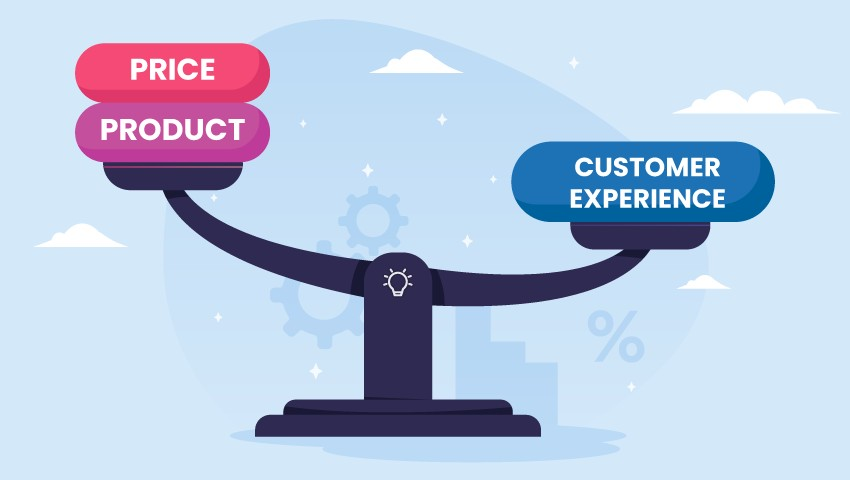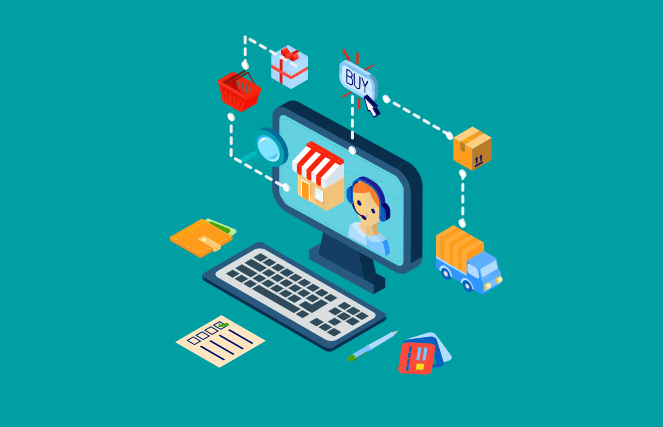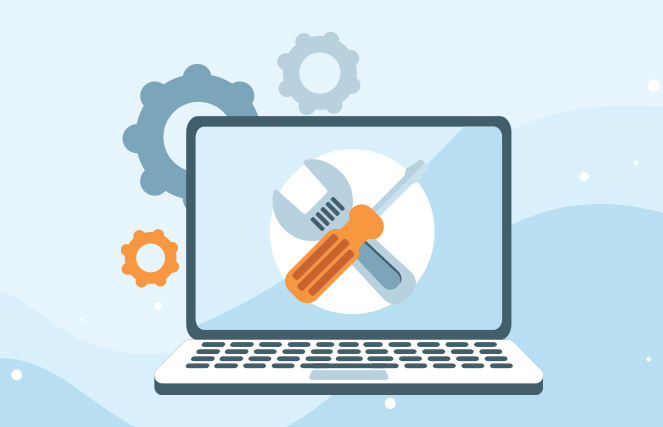Better customer experience means higher customer retention. This means that eventually, your customers will spend more on your brand. A study states that 86% of buyers are willing to pay more to receive a good customer experience. For example, customers will pay up to 13% (this goes as high as 18%) for luxury and indulgence services by receiving a great customer experience. CX also plays a vital role in the customer support area (and it should!)
This brings us to omnichannel customer support!
Omnichannel customer support is a strategic approach to improve the reach and cater to a seamless customer experience. It includes multiple mediums of communication between a customer and a brand.
The omnichannel customer support strategy delivers a seamless and customer-centric experience across various digital channels, and it eventually collaborates to better your overall customer experience. Hence, if you’re looking to implement an omnichannel customer support strategy to improve your customer experience, you’re at the correct place. This article will help you stay ahead of the top customer support stats in the upcoming years.
Why Does Omnichannel Customer Experience Matter?
If we specifically talk about customer support, omnichannel customer experience matter for multiple reasons.
- As a technology, it helps businesses to predict consumer behavior within a few clicks. It can combine contextual and historical customer data with in-the-moment behavior. As each customer interaction is captured, it helps businesses to capitalize on their personalization goals.
- It is proving to be a game-changer for businesses who want to increase their revenue and customer share—integrating analytics tools and syncing data across channels results in an immediate performance boost.
These two reasons are exactly why customer-centric businesses need omnichannel customer support. In the current market, they need to understand customers in a way never done before. Hence, omnichannel customer support is a must to reduce customer effort and create a proactive, positive, and personal customer experience.
What can Companies Do to Achieve Omnichannel Customer Experience?
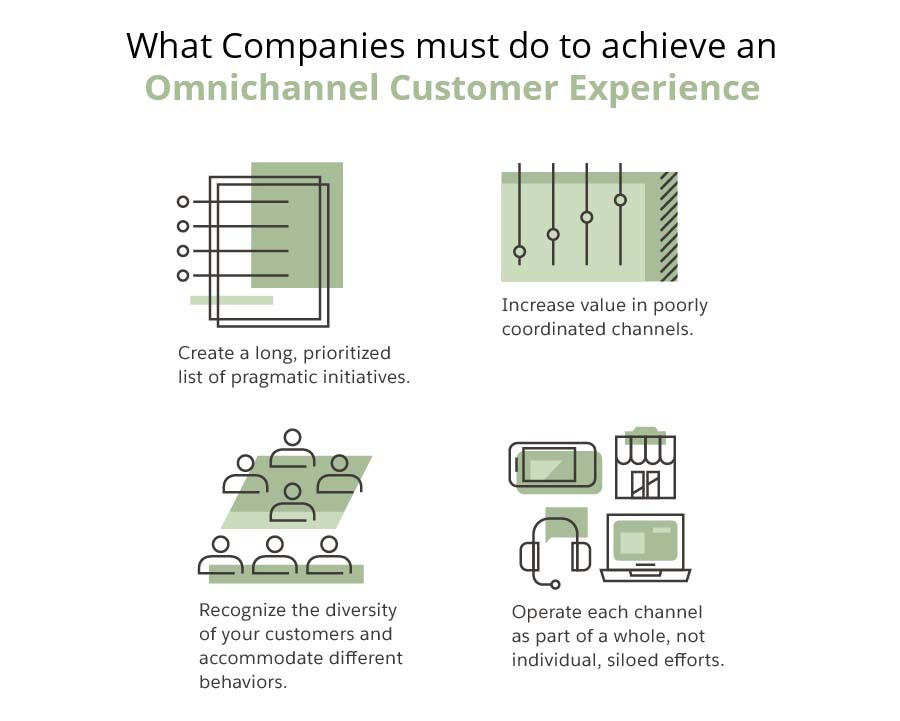
4 Primary Know-hows to Achieve an Omnichannel Experience
Here we bring you six omnichannel best practices for businesses to gain a competitive advantage. All you need to do is follow these steps or check if your businesses follow these practices or not.
- Understand Your Customer Personas
- Make Your Support Interface Mobile-Responsive
- Find Out What Channels Require More Attention
- Do You Have these Omnichannel Customer Support Features?
- Self-Service: A Must-Have
- Improve Your Response Time Across Channels
- Omnichannel Customer Support For Forward-Thinking Businesses
1. Understand Your Customer Personas
An effective omnichannel customer service strategy starts with an understanding of your customer personas. This builds a solid foundation for the blueprint of your business.
This is usually done by using relevant data. See if your customers have an active online presence or not. Do your customers find answers to their questions online? Do they try to solve it themselves before reaching out to you? Do they base their buying decisions on the customer reviews from other customers? What are the common queries that they face? Do you have a plan to tackle these common queries?
Studies say that 90% of customers looking forward to having consistent interactions across channels. It is essential to answer these questions and pick the most useful channels to deliver a good customer experience. These three steps will help you answer all the who, what, and whys of your customer persona.
I. Analyze Your Customer Data
In the modern market, buyers have the power of social media and review networks. Hence, you must know what kind of customers your business caters to. The newer generations have the power of customer reviews at their fingertips. Even a single bad review on Twitter can severely harm your brand image.
If their expectations are not met, they will let the world know about it.
This should underline the importance of providing a stellar omnichannel customer service experience. Besides, Millennials have always had higher expectations from brands. They demand extremely great mobile experiences. They want to access the information they need anytime, at their convenience.
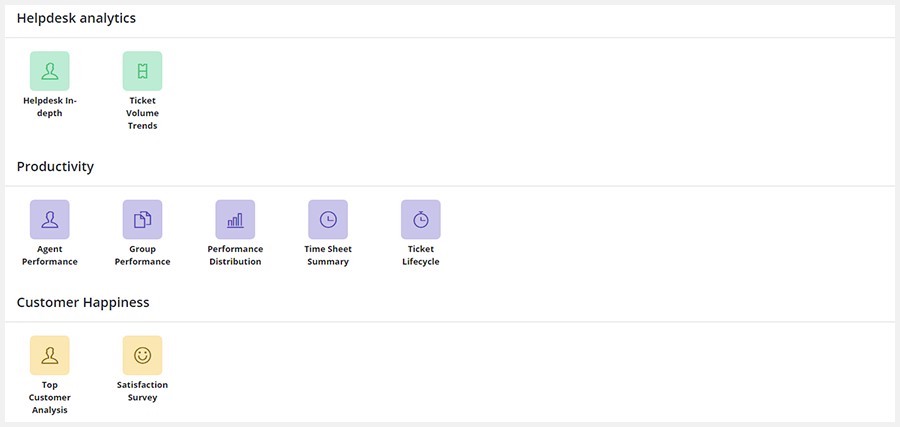
You can solve this by analyzing your customer base. A helpdesk that comes with analytics and reporting tools is ideal. It is so because it is possibly the simplest way to analyze statistics. An omnichannel customer support system integrates the customer data with it. This enables you to use the data from anywhere and that too in the most secure manner—no more jumping with various tools and interfaces. You can do it all from the helpdesk itself.
Omnichannel customer support software helps you understand customer behavior and later helps you make data-driven decisions. With large-scale customer data metrics, you can gain actionable insights. This way, you can get a complete 360-degree view of your support performance. Later with the help of this data, you can evaluate your strategy to designing better customer experiences. You can also use this data to predict the behavior of prospective clients.
DeskXpand is one such omnichannel customer support software that helps you collate all your data. And you can set up well-orchestrated support workflows and monitor everything from a single interface. DeskXpand’s analytics features come in handy and let you make data-driven decisions quickly. Take a deep dive into the expectations of today’s customers.
II. Use Surveys, Ask Your Existing Customers
Once you’re done analyzing your customer data, the next step would be to know your existing customers. Data will give you a broader insight into your customer’s wants, but asking them directly will narrow down your listings.
You can send survey forms to your existing customers through email or text messages. You can write a short personalized message asking them to fill the survey and telling them your plans and how you’re working day and night to make things easier for them.
III. Audience Segmentation
Grouping your audience is yet another powerful approach to improve the omnichannel customer experience. You can segment them by the products they use, the frequency of their purchases, their lifetime values, new customers, existing customers, and so on.
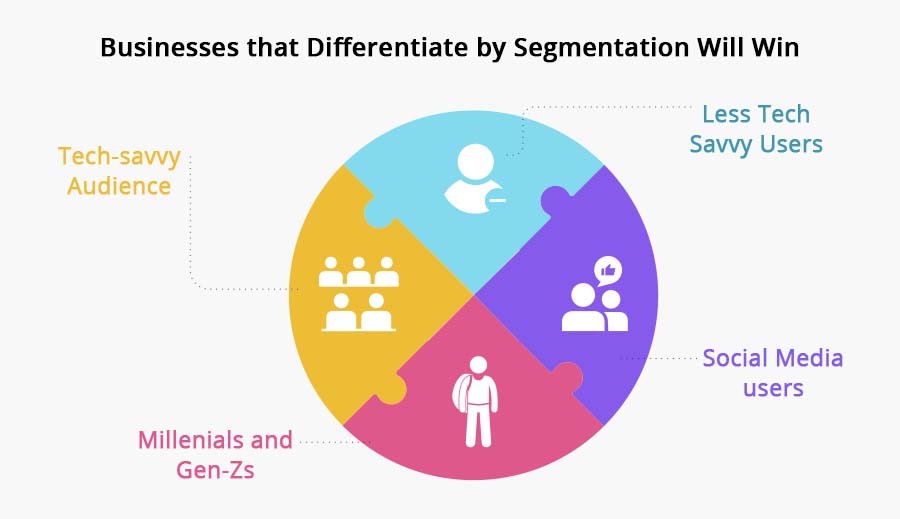
You can also segment them according to their age group, generation, etc. Find out if they’re tech-savvy or not. This way, you can direct and position your support in a way that speaks to your target buyer. For example, Millenials are now the largest generation in the US workforce. They’re handy with every type of digital resource. Hence they may reach out to you through channels like email or social media. Social media is convenient to Gen-Zs as well.
A well-implemented omnichannel customer experience can increase a client’s retention rate and potentially increase their customer lifetime value (CLV).
2. Make Your Support Interface Mobile-Responsive
Customers expect good mobile-responsive services. In today’s business environment, you cannot afford to run a business without providing mobile-based customer services. This also contributes to building your omnichannel customer experience. Every channel that you implement, be it self-service, FAQs, live chat, and so on, MUST be mobile-friendly.
Modern-day shoppers expect their experience on your website to be appealing. This means your support website needs to be simple, easy to navigate, and pleasant to view. For example, your self-service categories and their structure should have similar visibility on mobile devices and websites. You will also need to enhance your on-site navigation. You can implement features like site-search and real-time automated chat, among other things.
According to a survey, the customers searching for customer service on a mobile site complain the most about “incorrect display/difficult in navigating the website.” Slow loading times frustrate customers looking for information just the same.

Customer Experience and Loyalty Statistics
This naturally means brands who’ve not optimized their websites for mobile use are losing out to companies that have optimized their websites.
Bottom line: Ensure your customer support interface is mobile-friendly.
3. Find Out What Channels Require More Attention
Modern-day consumers are empowered enough to make and break your business. They’re after high-quality customer experience and nothing less. Hence you must know that makes them tick. For brands, this could only be possible if you know where your customers are. This means that you should know what channels your customers prefer the most/ or what channels do the customers use the most.
Following are some common channels that customers use/prefer these days:
- Emails
- Feedback Forms
- Self-service
Studies show that 47% of customers use three to five different communication channels to get in touch with respective brands. And 90% of them expect a consistent brand experience across all channels. To achieve an improved omnichannel customer experience, you’ll need to streamline your communication process across all channels (or at least the most preferred ones). The following graph shows the channels most preferred by the customers:
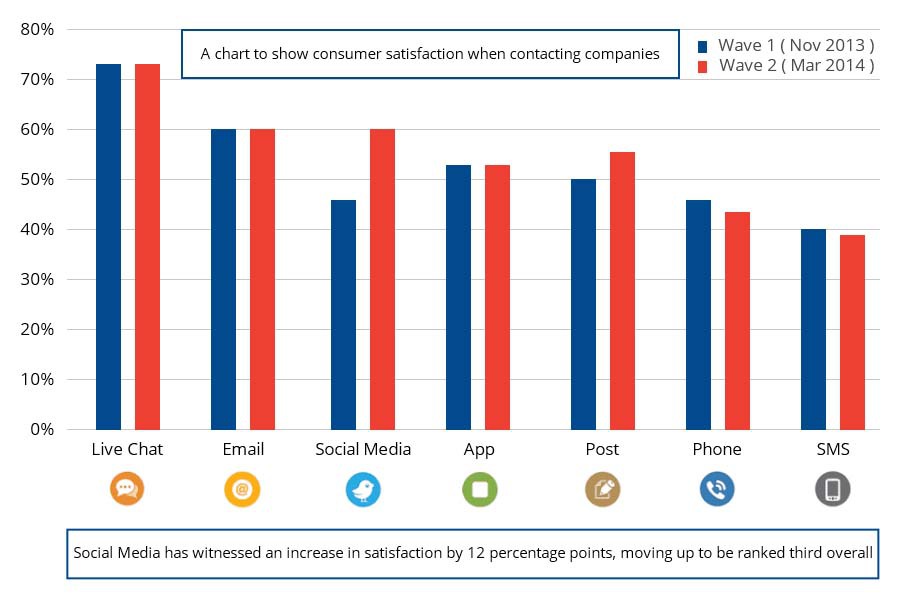
Most Preferred Communication Channels
The popularity of omnichannel customer support, particularly live chat and email, is at an all-time high, with social media at the third position. A survey says 1 in 4 (26%) consumers use live chat to contact a company. 73% of customers were ‘satisfied’ or ‘very satisfied with the experience they received via this touchpoint.
That’s your competition. 73 percent! You need to surpass or at least match this.
Phone calls and SMS are the lowest preferred customer service touchpoint. Only 43% and 40% of customers respectively use these touchpoints. Hence, the more you read into these statistics and analyze them in context with your brand, you’ll find out which channels require more attention and which don’t.
How to build context in terms of your brand?
Let us understand this by an example:
Susan bought earphones from one of our customers who runs an electronics giant. She had a problem connecting the headphones with her devices. She went to the company’s self-service section to find answers. But, she couldn’t find the solution. So, she called the customer service department for help. After registering her complaint, her call gets disconnected midway due to some technical issues at her end. She thought she would have to start from the beginning again.
But, to her surprise, in some time, she receives an email from the company with the next resolution and full context from her precious conversation. Within the next few minutes, she receives a resolution for her query. After her resolution needs are met, a survey form then triggers the feedback form. And she rates her experience as excellent. The customer support agent from the company is also happy with the feedback.
After knowing that Susan could not find an answer on the knowledge base, John, the customer support manager, was able to take relevant actions and got the question added to their knowledge base. Through a single experience, the company was able to retain a customer and improve its knowledge base. They met Susan’s needs because the agent could transition from one channel to another within minutes.
This was only possible due to DeskXpand’s omnichannel customer support helpdesk. It allows you to transition between channels seamlessly because all the channels in the support process are monitored from a single unified dashboard. Besides, quick access to data helped the agent find Susan’s email address and help her with the resolution at lightning speed.
John, the electronics giant’s customer support manager, says, “We predominantly use DeskXpand for post-sales support for our products. DeskXpand provided us a true omnichannel customer support experience for our customers while still recognizing the customer across all channels. This helped us advance both customer experience as well as improved efficiency in our support function.”
Well, John was smart enough to pick DeskXpand to improve his omnichannel customer experience. Read More on DeskXpand’s omnichannel customer support helpdesk brought John’s customer satisfaction rate at 80% and above. You can achieve these numbers too.
4. Do You Have these Omnichannel Customer Support Features?
Consolidating all the channels into a unified interface is not what omnichannel customer experience is all about. The following omnichannel customer support features are important for your omnichannel customer experience strategies among implementing various channels:
I. Chats Within the Ticket
The biggest benefit of omnichannel customer support is that it simplifies support at the agent’s end. Take this feature, for example: Chat within the ticket. Sounds mainstream, right? But only a support agent can tell you how much unnecessary communication they get to avoid because of this minor feature.
Once you enable your agents to chat within the ticket, everything they do is logged on the system. Even if they want to escalate the issue to senior authorities, they can simply do it from within the helpdesk. It saves a lot of redundant communication.
II. Swift Transitions Between Channels
As we studied the example in the last section, it couldn’t be more apparent why you need a helpdesk that allows switching between various channels amid a resolution journey.
Chats are effective and efficient. But, sometimes the queries are too complicated. Sometimes the customers simply cannot explain it over chat. At times like this, your helpdesk must provide an avenue to switch to simpler mediums like a phone call with the same agent without having to start over again.
III. Reclaiming Deflections
Reclaiming deflections means managing a sudden spike in the number of incoming tickets on a particular channel by routing it to the available agents. For example, on a particular week after your company offered a huge sale, your social media tickets are raising like never before.
As a support manager, you should be able to redistribute these tickets and assign them to available agents. An ideal helpdesk would allow you to do this seamlessly.
IV. Unified Dashboard
A unified dashboard is another common feature that your omnichannel customer support software should have. A unified dashboard allows the admins or the support managers to monitor everything from a single place. They can see all the agents and their work from a single place. This enables admins to provide quick support if an agent is stuck somewhere or has a problem in the workflow.
V. Customization
Customization enables you to connect with your targeted audience on a personal level. It lets you scale and personalize your data based on roles, categories, and preferences. By customizing every inch of your omnichannel customer support software, you can build a cohesive brand identity. It also must be self-configurable that does not require you to write long lines of code to customize.
VI. Advanced Channels: Live Chat/ Chatbots
These days a lot of people prefer interactive chats to resolve their queries. Chat holds the conversation when an agent is not available. Many companies integrate their knowledge base with live chat options to direct the customers to relevant solution pages. See if your customer base includes these channels or not. If yes, it would be beneficial to invest in live chat infrastructure.
So, now that you know what channels you’ll require and all the features you need for your business, are you ready to try out DeskXPand?
5. Self-Service: A Must-Have
Until a few years ago customers used to contact the companies for minor queries and the most trivial things. Today’s customers love scouring for answers on their own. Hence, the least you could do is make the information available to them in the most accessible way.
According to a study of 3000 customers, 40% prefer self-service options over any other option. And around 70% of these customers expect a company to offer a self-service option. Another survey by Oracle and Forrester says that an online self-service can decrease the cost of support by $11 per customer.
Accenture, in its study, states that adding self-service to a company’s customer support can save up to $1-3 million on an annual basis. And it is inevitable to note that self-service takes a huge burden off your support agents and helps them focus on difficult issues.
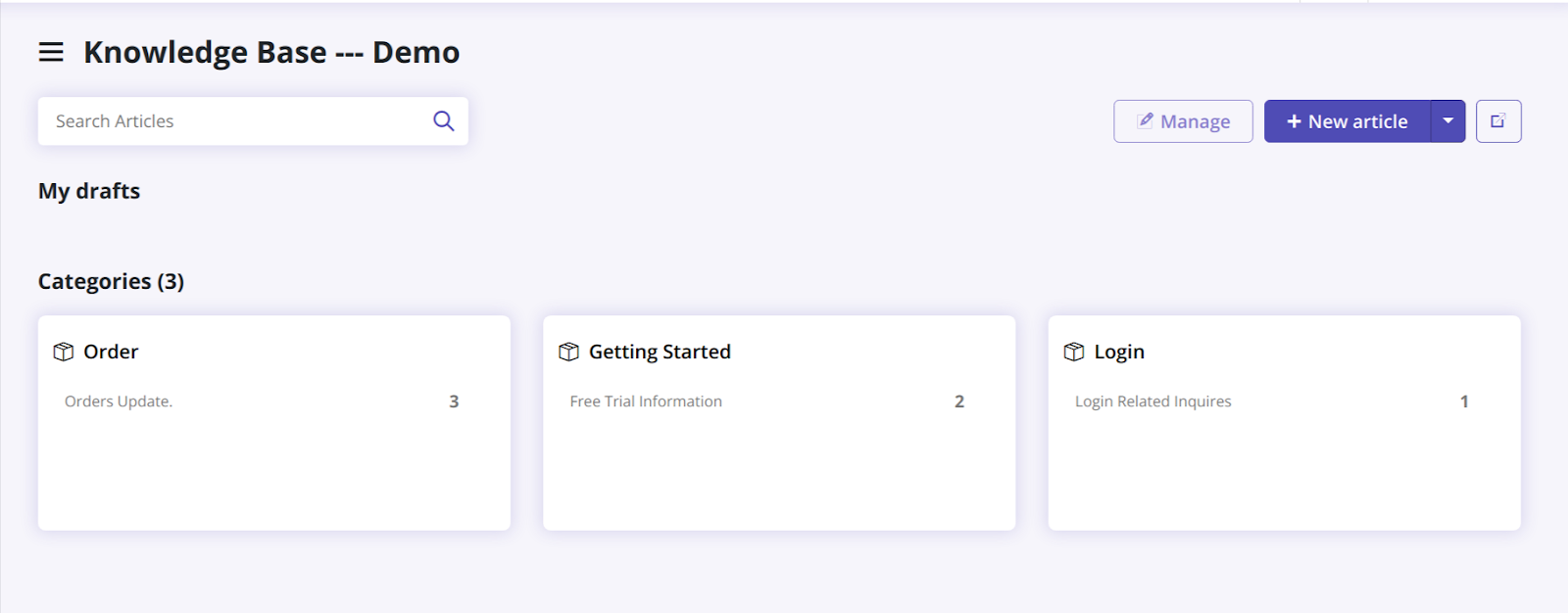
Hence, self-service is a must for improving your omnichannel customer experience. You can put together a website FAQ section, knowledge base, or even open an online discussion board to help customers immediately find answers.
6. Improve Your Response Time across Channels
The last tip to improve your omnichannel customer experience is to improve your response time across all channels. Modern-day customers expect speedy replies and resolutions. According to research, 39% of individuals expect a response within 1 hour of posting their queries on social media.
12% of customer managers sincerely focus on responding quickly to customer queries and concerns. One of Forrester’s surveys from 2016 shows that 41% of customers who register their queries through email expect a response within a 6-hour frame.
This shows that a longer response time has the potential to damage a company’s reputation. Not only that, it can increase the customer churn rate as well. Here’s what you can do to reduce your overall response time.
I. Autoresponders
Sometimes, customers only need to know that their query has been successfully registered and that their solution is on its way. However, when their complaints go ignored, a negative sentiment begins to appear. It affects your long-term relationship with the customer. This is where auto-responders come into the picture.
A study says, less than 10% of companies use autoresponders. It can be used to notify your customers that you’ve received their queries. Through autoresponders, you can keep your customers involved through every step of the resolution journey.
II. Email Templates
Email templates can also help you save time while writing back to your customers. Using pre-designed email templates, your agents can send personalized responses to your customers.
III. Canned Responses
Canned responses can be used to reduce your customer support response time and serve consistent support to your customers. Canned responses refer to the pre-saved or pre-formatted text. It usually includes common greeting messages or common responses that can be saved for future use.
It saves the support agents from typing repetitive answers time and again. Besides, they reduce typos and help the customer support agents disperse stress.
Read More: How to Reduce Customer Support Response Time
Omnichannel Customer Support For Forward-Thinking Businesses
Providing efficient and reliable customer support across all channels has numerous benefits. This includes increased profitability, improved brand reputation, and business growth. Omnichannel customer experience isn’t mere hype. With the right tech tools and strategies in place, your business can flourish.
Apply the above-mentioned best practices that combine insightful strategies and adopt a unified to meet your customer service goals, if not exceed them. We can help you blend these two aspects with our extensive, feature-rich omnichannel customer support helpdesk.
DeskXpand meets all the criteria that you just read. It is an ideal choice for businesses seeking to serve a personalized omnichannel customer experience. It is built by functional experts and developers who specialize in helpdesk development for more than 14 years. Take a trial, and you’ll know what I mean when I say it is an ideal choice for businesses.

